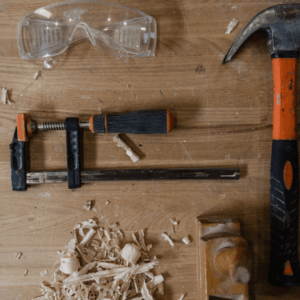Maintaining industrial equipment is essential for ensuring operational efficiency, extending equipment lifespan, and minimizing downtime. Whether you’re managing a small workshop or a sprawling warehouse, understanding the basics of maintenance can save you time, money, and frustration. In this guide, we’ll cover key aspects of industrial equipment maintenance, from frequently replaced tools to essential tips for maintaining larger warehouse products like forklifts.
Why Maintenance Matters
Industrial equipment is an investment. Regular maintenance helps:
- Prevent Breakdowns: Routine checks and repairs reduce the risk of unexpected equipment failure.
- Ensure Safety: Well-maintained equipment minimizes workplace accidents.
- Optimize Performance: Properly functioning tools and machines operate more efficiently.
- Save Money: Proactive care reduces costly emergency repairs and extends the life of equipment.
Frequently Replaced Tools and Their Lifespan
Certain tools and components in industrial settings wear out faster than others due to frequent use. Here’s an overview of commonly replaced items and their typical lifespans:
1. Drill Bits and Cutting Tools
- Lifespan: A few weeks to months, of course this is highly dependent on material and usage.
- Signs of Wear: Dull edges, slower performance, or chipping.
- Tips: Use the correct tool for the material and keep cutting tools sharp to extend their life.
2. Belts and Chains
- Lifespan: 1-3 years.
- Signs of Wear: Cracking, stretching, or slipping.
- Tips: Regularly inspect tension and alignment to avoid premature wear.
3. Filters (Air, Oil, and Fuel)
- Lifespan: 3-6 months.
- Signs of Wear: Reduced machine efficiency or visible dirt buildup.
- Tips: Follow the manufacturer’s replacement schedule and use high-quality filters.
4. Bearings
- Lifespan: 3-5 years.
- Signs of Wear: Increased noise, vibration, or heat.
- Tips: Lubricate bearings regularly and avoid overloading equipment.
5. Hydraulic Hoses
- Lifespan: 5-10 years.
- Signs of Wear: Cracks, leaks, or reduced system pressure.
- Tips: Inspect for damage and replace immediately if compromised.

Maintaining Larger Warehouse Equipment
Large machinery, such as forklifts and conveyor systems, requires special attention to ensure reliability and safety.
Forklift Maintenance
Forklifts are critical for moving heavy loads efficiently but can pose risks if not maintained properly.
- Weekly Checks: Inspect tires, brakes and forks.
- Scheduled Servicing: Change oil and filters, check battery health (for electric forklifts), and inspect engine components regularly.
- Common Repairs: Replacing worn tires, addressing hydraulic leaks, and recalibrating forks.
- Pro Tip: Keep a maintenance log to track service dates and upcoming tasks.
Conveyor Systems
Conveyors are vital for streamlining warehouse operations, but downtime can disrupt workflows.
- Weekly Inspections: Check belts, rollers, and motors for wear or misalignment.
- Lubrication: Apply lubricant to moving parts as per the manufacturer’s guidelines.
- Cleanliness: Remove debris and ensure proper belt tension to avoid jams.
- Pro Tip: Replace belts and rollers before they fail to prevent cascading damage.
Essential Maintenance Tips
- Create a Schedule: Set up regular maintenance intervals based on equipment usage and manufacturer recommendations.
- Train Staff: Educate employees on proper equipment handling and basic troubleshooting.
- Keep Spare Parts: Stock frequently replaced components to minimize downtime.
- Use Quality Supplies: Invest in high-grade lubricants, filters, and replacement parts.
- Monitor Performance: Track equipment efficiency and address anomalies promptly.
Tools and Technology for Maintenance
Modern tools and software can simplify maintenance tasks:
- Diagnostic Tools: Infrared thermometers, vibration analyzers, and oil analyzers help identify issues early.
- Maintenance Management Software: CMMS (Computerized Maintenance Management Systems) streamline scheduling and record-keeping.
Regular maintenance is the backbone of a productive industrial operation. By replacing worn tools on time, caring for large machinery like forklifts, and leveraging modern technology, you can keep your equipment running smoothly. Remember, proactive maintenance isn’t just about avoiding breakdowns, it’s about building a safer, more efficient workplace.



